A lot of people lump ‘The Middle East’ together into one singular region of “Middle Eastyness”, but actually each country is very different, particularly during Ramadan. Each has diverse cultures and rich histories, very different political interests, and of course their own unique operational and environmental challenges that pilots should know a bit about before heading in.
So, here is your ‘In the Middle of the Middle’ guide to the ‘Middle East’ (or at least the parts of it you’re likely to need to know about.)
Starting with the ‘Need to Know’
The UAE
The UAE only became the UAE fairly recently. Before that it was seven separate emirates and a big port in Jebel Ali which the Brits took an interest in. When they got their independence from Britain, the emirates joined up, led by Abu Dhabi. Dubai is the most westernized of the all emirates, and each pretty much has its own international airport.
- OMAA/Abu Dhabi International is the capital airport for the UAE. They generally prefer not to be used as an alternate for Dubai bound flights since they are vert busy.
- OMDB/Dubai International is the main Dubai airpot, and the busiest airport by passenger numbers in the world. You have two parallel runways 12/30 left and right with CAT III approaches.
- OMSJ/Sharjah International is the next door neighbour to OMDB/Dubai (around 20km north and you fly past it on some Dubai arrivals). Runway 12/30 is 13,320 ft long with an ILS either end. Watch out if OMDB is getting foggy though because OMSJ won’t be far behind given it is also close to the sea, and it will fill up fast with diversions if it isn’t.
- OMDW/Dubai World is the slightly smaller international Dubai airport just next door. Mainly used for cargo flights, it offers a good alternate to OMDB. There is limited parking and fuel trucks though so if you divert here on a day a lot are diverting then expect long delays. Runway 12/30 has CAT 3 ILS both ends and is 14,764 ft long
- OMRK/Ras Al Khaimah is a decent airport to consider as an alternate with an ILS on 34, an RNAV on 16 and 12,336 ft of tarmac between the two ends. Watch out for terrain here though.
- OMAL/Al Ain has a 13,140 ft runway with ILS/RNAV approaches. Another UAE option for an alternate.
- OMAD/Al Bateen is a small but quite busy executive airport near OMAA/Abu Dhabi, which just caters for private jet ops. This airport will be completely closing from May 11 to July 20.
We put together a little regional brief on this with some handy contacts for you.
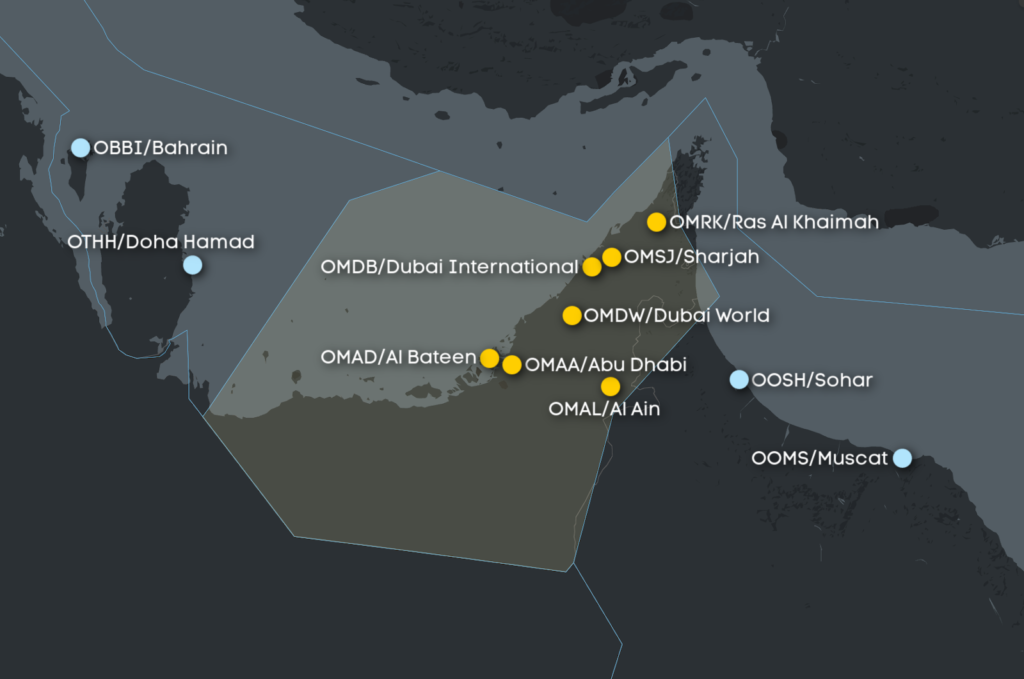
UAE Airports and closest neighbours.
Saudi Arabia
Saudi Arabia is the largest country in the Middle East.
They are a major world economy, the third biggest producer of oil (behind the USA and Russia) and the largest exporter. It is also at the heart of the Islamic religion and you need to bear their customs and laws in mind if heading in there. Women are expected to dress modestly and cover their heads, and alcohol, swearing, gambling etc is forbidden. This will be much more strictly enforced during Ramadan.
- OEJN/Jeddah – long taxis possible. Keep an eye on those brake temperatures. This airport can accommodate the most number of aircraft in the world so… it’s big! There are no less than three runway 16/34s here. The longest is 13,123 ft and all of them have an ILS approach. Jeddah has recently been targeted by drone attacks and the southern Jeddah FIR (close to Yemen border) should be avoided).
- OERK/Riyadh – high elevation airport with steeper than normal GS on some approaches. You have two runways to chose from, although they tend to stick to one for takeoff and one for landing. 15R/33L is the longer of the two, offering 13,797 ft (a whole 2 ft more than 15L/33R)
- OEDF/Damman – Often keep you high or use track shortening. 34L/16 R and 34R/16L are both 13,123 ft long with an ILS approach.
Because of the ongoing conflicts with neighbors, Saudi have a procedure called ESCAT (used to be called SCATANA) which is basically an emergency procedure when the airspace is under threat. If they announce it, be prepared to follow whatever instructions given – probably either to leave the airspace, or to land where they tell you.
- Consider what your alternative routing options or alternates will be in advance. ESCAT has been activated more frequently of late, and this may mean long holding at the boundary of their airspace.
- Egypt is available to the west, but Israel may not accept you if you haven’t advised them in advance. The process for landing and overflying Israel is still quite lengthy and dependant on where you come from, are registered, who you carry etc.
- Jordan is available, but Syria is a no go country, and landing in Iraq is less advisable.
- Yemen to the south is a no fly area.
Full info on ESCAT is found in their AIP. We wrote a bit about the Yemen conflict threat here.
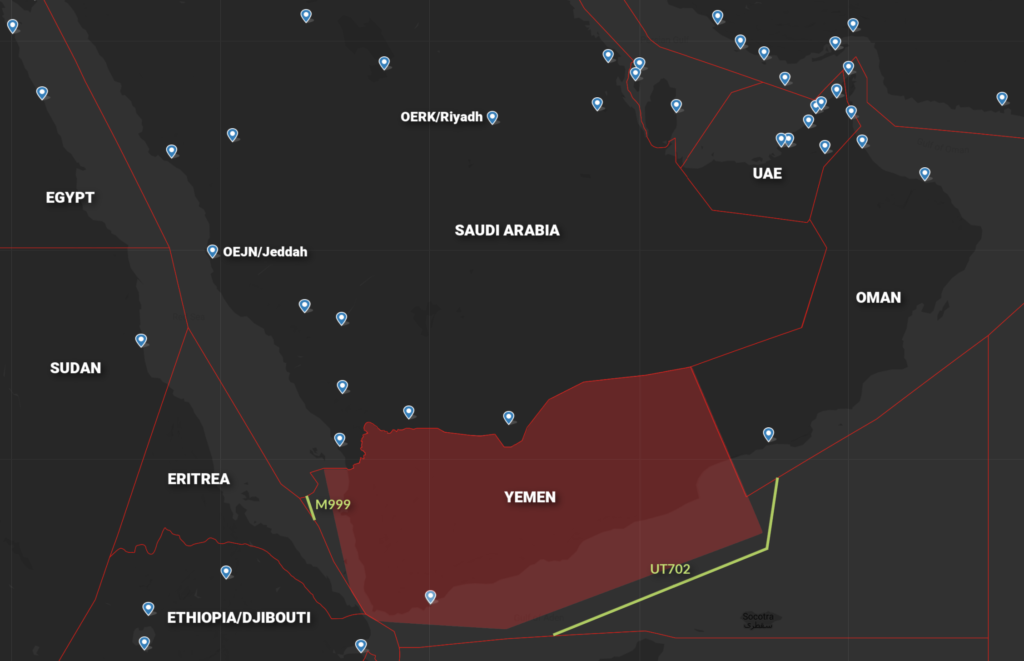
Yemen/Saudi risk.
Oman
Oman is a funny shaped country with a bit above the UAE and most of it below, bordering Yemen. They generally aren’t too political and get on with everyone.
- OOMS/Muscat is the main airport. 08L/26R is currently the only operational runway. It offers an ILS either end and 13,123 ft. Muscat is a decent fuel and tech stop if routing from the Far East.
Iran
US operators are not allowed to overfly Iran, and there are overflight warnings associated with the country. If you do overfly and need to divert in the country, be aware that if you are coming from other countries, or have some nationalities onboard, this might cause some problems for you on the ground.
If you operate in with female crew, expect them to be asked to cover their heads leaving the airplane at some airports. There are also potential issues with lack of female security staff and crew have reported female pilots being asked to let their male co-pilot carry out walk-arounds to avoid difficulties with male security staff escorting a female.
The main airport OIIE/Tehran is a pretty decent one to go into though, although it is in the middle of some high terrain.
- OIMM/Mashad – Another high altitude, high terrain airport with two decent length parallel runways (longest being 12,861 ft). Only 31R has an ILS approach (VOR DME on the rest) and you can likely expect a procedural to the ILS. Watch out on the GA because there is a large Holy Shrine which you are not allowed to fly over below 6000′
- OISS/Shiraz – Right in the middle of a load of terrain. Not easy approaches to fly. The longest runway here is 14,200 ft and only 29L has an ILS. The GA on this is another one to watch – a lot of turns to keep you away from high ground.
- OITT/Tabriz – Ok, all airport in Iran have high terrain around them. Tabriz is no exception. A little easier since it is only on three sides. Like the others, it has two decent length runways, but limited taxiways. There is an ILS approach onto 30 L and R but if you want to land onto either runway 12 you will need to circle…
- Most smaller airports are not always well maintained. A quick Notam search shows up no less than 16 holes in poor runway 30 at OIIP/Payam Interational, and OIII/Tehran International (the other one), OIBB/Bushehr, OIHH/Hamadan, OINZ, OITL, OIMS… also come up
Jet Business Solutions, based in the UAE, can assist with support and handling in Iran – ops@jbs.aero
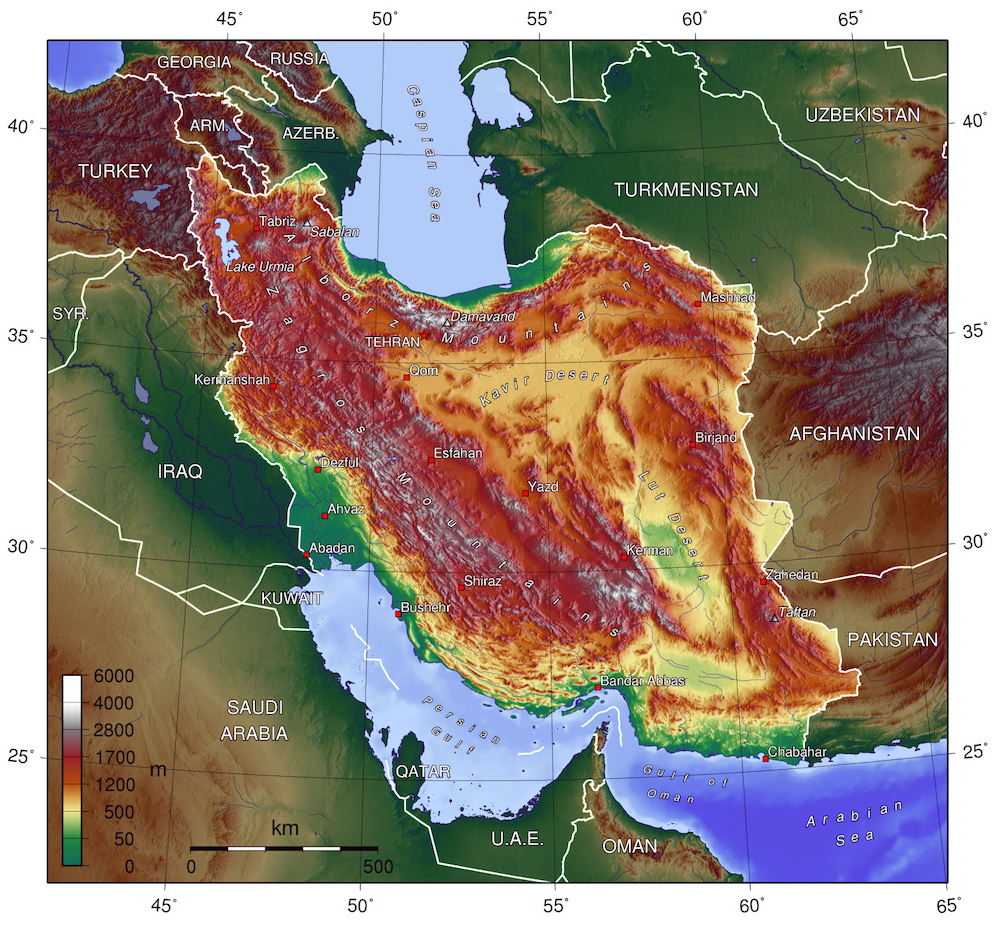
The topography in Iran is… red. So big and high.
Qatar
- OTHH/Doha Hamad is the main airport here. Doha is one of the most modern airports in the world and fantastic for passengers. The longest runway is a whopping 15,912 ft and there is a CATIII approach onto all four. The airport and ground operations here tend to be very efficient.
It is nice to operate into because it is built out on its own little bit of land. The city is quite futuristic looking and its a nice view on approach. There is high terrain close by so watch out for GPWS warnings if you mess up your tracking or speeds. The buildings also lead to wind shear and turbulence on approach.
While fairly westernised like Dubai, Qatari customs and laws can be stricter and should be carefully observed during Ramadan.
Kuwait
- OKBK/Kuwait – pretty restricted airspace close into the airport so be careful if deviating. Get those calls for weather in early. This is another big airport with long but efficient taxis. Kuwait is more prone to big sand storms than some of the other areas. The longest runway is 11,483 ft and there is a CATII approach onto all four. Watch out if you’re operating on the 15s though – the taxi can be long and brake temperatures can heat up fast.
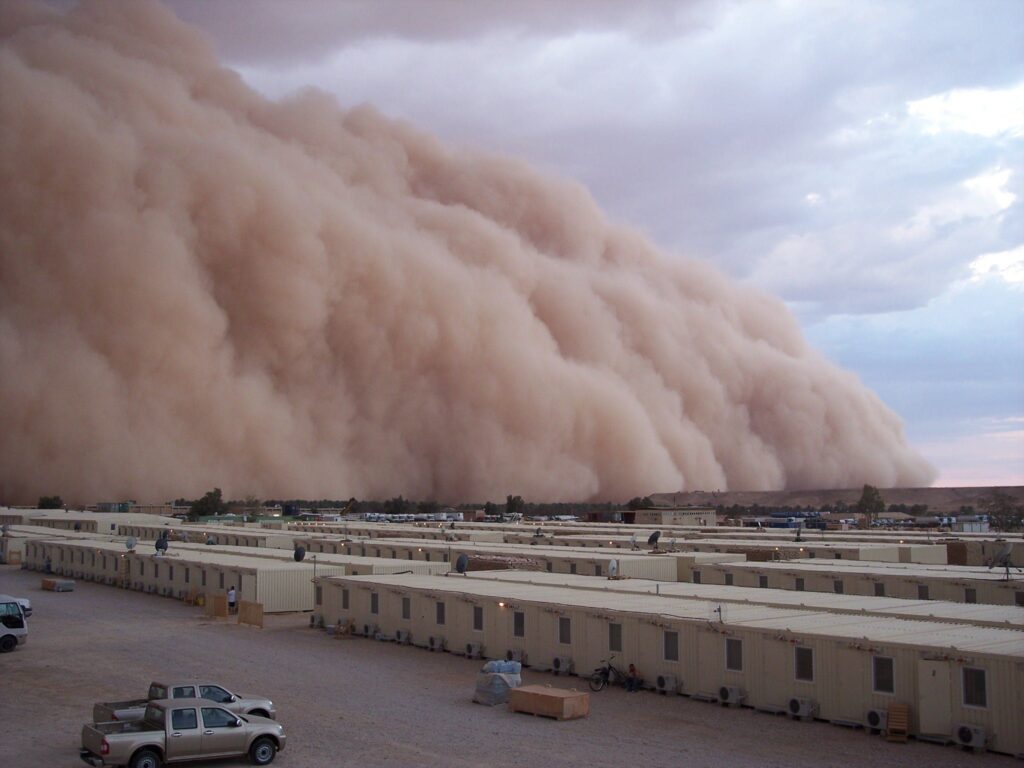
Probably not what you want to see rolling towards the runway.
Bahrain
- OBBI/Bahrain – This airport gets a lot of thermal activity in the summer to watch out for turbulence on short finals. The runways 30L and R have been known to confuse folk in the past as well. 30R is the long one in case you’re not sure (13,305 ft vs 8,301 ft so the difference should be quite obvious).
Iraq
- US operators are permitted to overfly the ORBB/Baghdad FIR above FL320, but landing there would be unadvisable due to conflict, security and safety concerns.
- ORER/Erbil, ORBI/Baghdad, ORMM/Basra, ORNI/Al Najaf international airports are all fairly well equipped.
Safeairspace
Conflict is common across the region. Currently several countries are no fly areas, with cautions applied to others. Visit Safeairspace for full information on the current status.
- Syria is a no fly country
- Yemen is a no fly country
- The southern Jeddah FIR (Saudi Arabia) and OEJN/Jeddah airport have cautions due attacks from Yemen
- Iraq can be overflown, but with certain restrictions
- Iran is off limits to US operators
- Israel has political tensions with neighbouring countries. Overflying and landing is possible but requires pre-planning
- Lebanon has some risk due to proximity to other conflict nations.
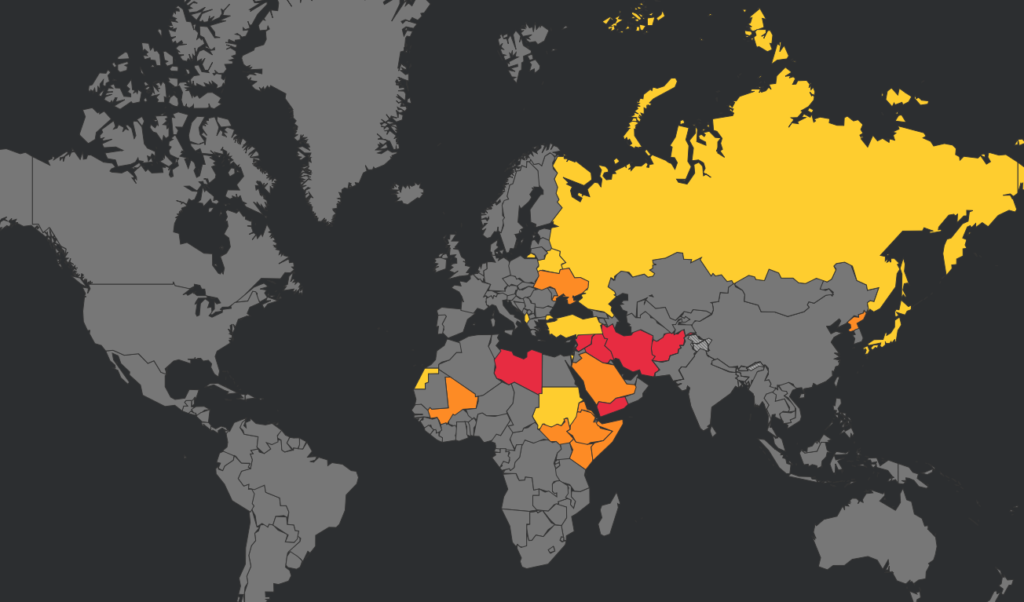
The Middle East region sees the majority of Safeairspace risk warnings.
Why fly to the Middle East?
It is very central and provides a connection between the west and the Far East and Asia. The main airports offer good tech and fuel stop options.
It is also an interesting region. There is great golf in Dubai, World Heritage sites in Saudi and Iran. And then of course there are the Finance and Oil Industries so corporate companies might find themselves flying business folk over. So, if you are ever operating in make the most of the layover, there are some cool sites to see and interesting things to see and do.
And ending with some ‘Good to Know’.
Some history of the region if you want to read some more. And a little mention is necessary because conflicts and Safeairspace aside, actually the political goings-on of the region are fairly important to our airplane goings-on.
For example, until the end of 2020 Israel was out of bounds. You could not fly across it if you were routing from a big old bunch of places. It was BIG news at the end of 2020 when the likes of Saudi Arabia and the UAE rebuilt their relationship with Israel and agreed to flights between the nations. Neighbors followed suit, and Jordan now also allow flights passing over Israel to utilize their airspace. Being able to fly across Israel significantly shorterns the flight time for aircraft routing from the Middle East and Europe.
A second big political/ aviation newsworthy event was the ending of the Qatar blockade by Saudi, the UAE, Egypt and Bahrain. Obviously, this primarily helped Doha bound flights, but for all operators in the region it means easier airspace and radio work, and the opportunity to once again use OTHH/Doha as an alternate.
The politics of Iran and Iraq mean if you are routing through one airspace, you probably should not divert into the other. Iran is the bigger worry here because they have an ADIZ and need you to check in prior to entering their airspace. One of the main southbound routes through Iraq (UM688) brings you close to the Tehran FIR border, and if you meet a big thunderstorm along the way and deviate in the wrong direction, you might just find yourself accidentally edging over the border. The same goes for routing along the M677 in Kuwait. If you are heading to Dubai, the VUTEB hold sits close to the border and again, weather can push you close to the FIR boundary.
The tensions with Iran and much of the rest of the Middle East are constantly simmering. One big no-no on your routings here is to refer to the Arabian Gulf as the Persian Gulf. At least to the wrong controller.
More on the topic:
- More: Saudi Arabia Overflights – Free Route Gotcha
- More: Delays and Diversions in Dubai
- More: Saudi-Yemen Airspace Update
- More: Say GooDubai to a runway for 45 days
- More: Has The Yemen Conflict Reached The UAE?
More reading:
- Latest: Teterboro: RIP the RUUDY SIX
- Latest: 400% increase in GPS Spoofing; Workgroup established
- Latest: GPS Spoofing WorkGroup 2024
- Safe Airspace: Risk Database
- Weekly Ops Bulletin: Subscribe
- Membership plans: Why join OPSGROUP?



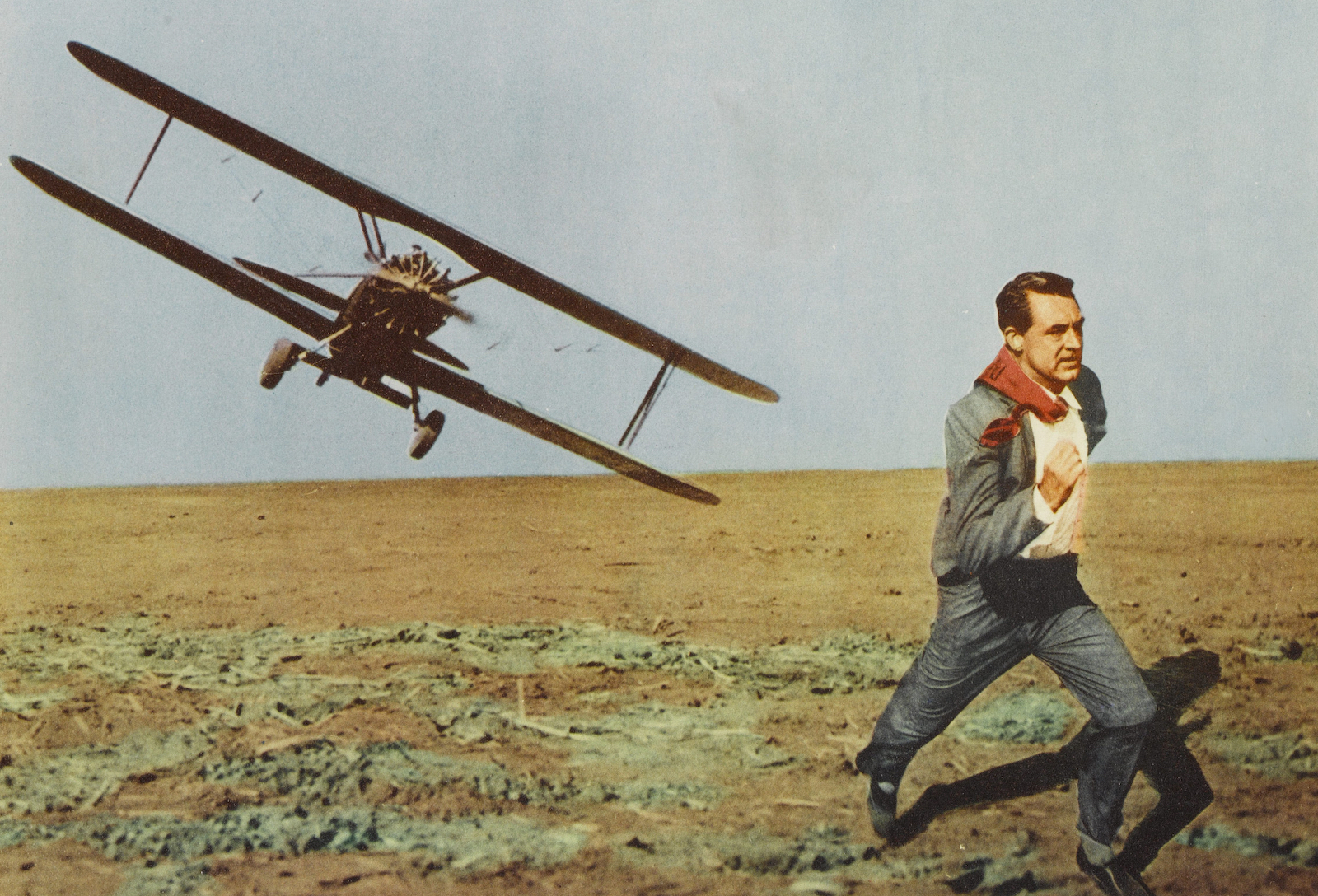







 Get the famous weekly
Get the famous weekly 






Hi.
No intentions of criticizing your work – I love the website -, but this article looks like outdated. I am currently being based in the ME region and the info provided on this article is far from the reality.
Abu Dhabi is not by any means the main airport in the UAE. Not at all. The preferred spot for GA in the region is OMDW. OMDB will go second and maybe (just maybe) Abu Dhabi in the third place.
All the suggestions about the ladies having being covered when outside the a/c or the FO carrying out if a female is the PIC is absolutely old.
The ADIZ check in process when overflying Iran depends on the route. There is no such need to do if you cross northbound, i.e.
The Saudi Arabia emergency system… I have never encountered even one situation and I have been overflying Jeddah and Riyadh FIR’s for the past 5 years almost on a daily basis.
Again, perhaps this is an old article. Didn’t bother myself to look at the date, but just trying to help the community as a often consumer of Blog Ops.
Cheers!
Hi “Justme” – thanks for the feedback, always helpful for others to read and see what alternatives experiences there are. This post is aimed at those who do not have familiarity with the region, to provide a headsup on what could be expected and what is within the country rules and regs. It might not always match the practical reality of what folk who fly there often experience but that’s why Airport Spy reports and feedback on here are so useful from those currently operating there.
As a quick explanation:
By OMAA being “main” we were just referring to the fact Abu Dhabi is the UAE capital. I’ll change “main” though to avoid confusion on what we meant.
The females needing to be covered is primarily for Tehran and is actually due to security (lack of female security staff). It might different now, but still good to provide folk not familiar with the region some heads up.
ADIZ – all of Iran is a military zone and their RARs do require “prior permission”. Some operators may receive permission which removes the requirement to call in advance but not a given so we felt better to share what is in the rules.
The Saudi ESCAT procedure is also included in the RAR. Recently some pilots did report being held at the FIR boundary as ESCAT was activated. It is relatively uncommon as you say but definitely something to know about.
Dear Rebecca,
Hello and I trust this message finds you well. I’m Rishi Ailawadi a former colleague at Emirates. We never had an opportunity to fly together. I’ve been going through your write-ups both on Linkedin/ Ops Group and wanted to express my appreciation of transforming your flying experience onto pen and paper so gracefully.
Needless to say you’re doing a great job. Keep up the good work! Times are changing and here’s wishing you the very best for taking to the skies again.
Kind Regards